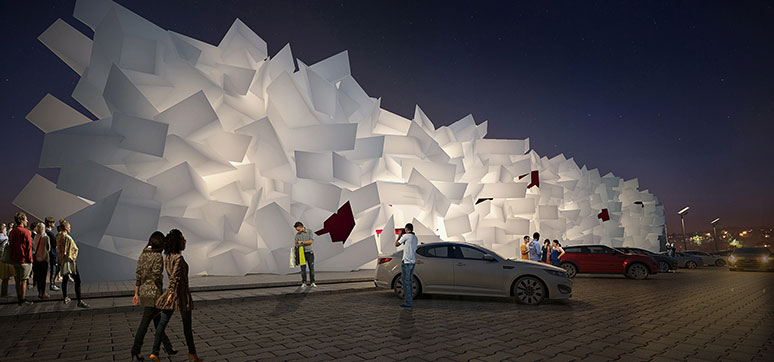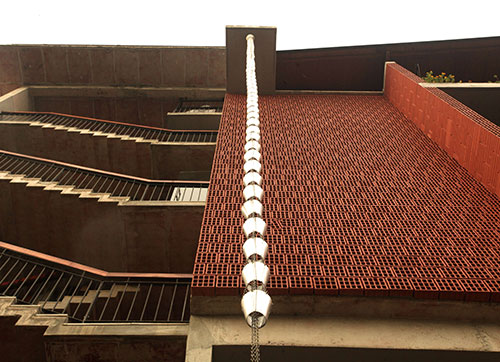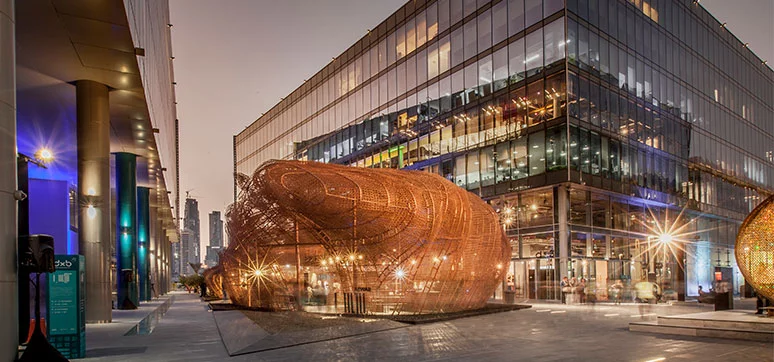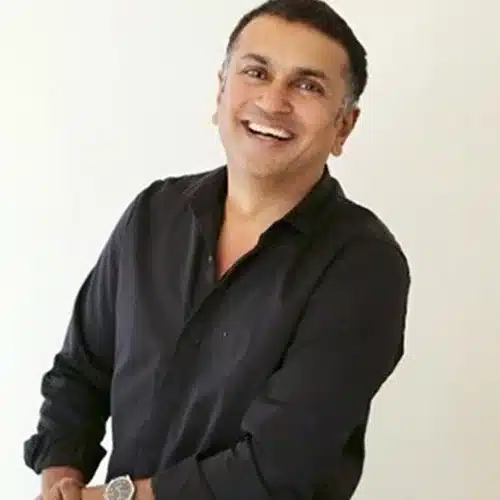Tell us about your practice and design approach?
Ours is a boutique practice. Our team is small and the number of projects we can possibly work on is limited. We have a presence in multiple regions – Kochi- India, Dubai- UAE, London- UK, Bali- Indonesia. Now Bali primarily deals with product design and sourcing of certain specific items regarding our own projects. Our strength is we are small and have a diverse pool of architects from different regions that make out design solutions more vibrant. We have been achieving substantial strides in terms of sustainable solutions – including having projects that are completely off the grid (for the last 10 years) to developing projects that have gone through the cradle to cradle life cycle. Every project is viewed differently as they stem from different programmatic briefs, site and desired contextual response and place making plays a key role in grounding the project.
What inspired you to become an architect?
It was my mother who inspired me. I used to aimlessly draw- with great passion- during my high school days. At that point, Architecture was a very alien subject to me or our family as almost everyone in my generation was either a doctor or a dentist. I was also thinking of pursuing the same at that point. However, towards the end of 12th grade, there were a series of events that resulted in a shift in thought from Medicine. I was interested in making cartoons. However, this was not a program that culminated in a degree at that point. So around that time, my mother did point my possible inclination towards design and architecture. One thing led to another and finally, I enrolled myself in the architecture program at BIT. Fate has been kind. At Bangalore Institute of Technology, I was extremely lucky to have Prof. Sathya Prakash Varanashi as our HOD.
So in short, it was a series of fortunate events that led me to being here. On top of everything, I love creating meaningful spaces layered with life. After undergraduate, I worked in Bangalore for a while and eventually planning to head to UCL for pursuing a PG in Urban design at UCL. However the same year I was awarded Young Architect of the Year by Malayala Manorama and with this project started coming in.
Could you please talk about your projects featuring very innovative and different kinds of façade and fenestration designs?
Well, our practice is very new to London. So I will speak of what we have been doing in India or the Middle East. I will share a few projects that will give you details of the facade details – our core strength is working with the raw materials in developing façade systems- now this is easier in the tropics where the temperature variation is not very drastic. In the Middle East and UK this can be challenging. Apart from this, we can share what we did for a commercial building – where the entire façade is a series of siding folding windows and the whole thing can open up making the internal spaces like a huge balcony.

How do you go about choosing the material of the façade and cladding?
Well- this is very project, region, and program-specific. The whole project is also influenced by the orientation we choose. So most of it is decided at the very first stroke of the line while designing. We try to minimize passive absorption. We do not start or approach a project with any preconceived idea or agenda. We were once working on a project where the client had massive sources of types that were being recycled. In that case, our first thought was to see how effectively we can use their own material. At times it’s challenging, but then that’s what makes it interesting. The selection of façade material is based on the quality of life you want to achieve internally. At times you are fine with external elements passing through, at times it has to be high performance in terms of thermal gain, at times it has to have adequate thermal mass. So in short, it’s dictated by a wide range of parameters.
According to you, where is the architectural segment is heading in the Middle East? That’s a super wide-ended question- I would say that the future of this region is very promising. With the Middle East having the youngest population in the world and people traveling more than ever before the expectations are high. The education system has bought up a higher level of awareness in terms of being responsible or sustainable solutions. There is a lot of focus on human comfort. This is not just in achieving an air-conditioned space- but they are trying to bring this difference in transport, spatial volumes, quality of life, ease of doing business, etc. The UAE has mandated that 25% of its construction be 3D printed. This gives a huge impetus to the 3D printing segment. So in short, they are very aggressive and optimistic. What are the major challenges in the architectural segment in the Middle East? The Middle East is perhaps one of the fastest-growing economies- the changes witnessed in the last 2-3 decades is astounding. However, I think the main challenge they are facing is reconciling with their historic past. Because of the sudden surged the connection between the region and the architecture is very limited or non-existent. In addition to this most of the structures are not climate-sensitive- this would obviously mean higher energy cost. So there is a higher chance of redundancy over a period of time.
Apart from that, it would be good to see energy-smart buildings, increasing in number- this is already happening. What opportunities do you see for the architects in the region? The Middle East has always been kind to outsiders. So I envisage the same to continue. The economy of late worldwide has slowed down. But over the period it will get better and obviously with that opportunity. As an architect what sustainability means to you? How do you ensure the sustainability factor in your projects? Sustainability for us means being responsible. This starts from the very first line you draw- in terms of orientation to the material selection. We try to see how we can use materials that have lower embodied energy and the life cycle of a material. In the tropics simple measures like adequate lighting and cross ventilation can effectively lower energy consumption. In UAE it’s important to use the right materials be in glass or block works based on its absorption. In addition to this there are various energy modeling tools we use to make informed decisions.
What are your views on the future façade and fenestration technologies as well as materials?
I think going ahead, we are going to have smart materials that“In Future, We Will Have Smart Materials for Façade to Alter Thermal and Climatic Response”
can alter its thermal and climatic response. In the next 10 years, we are going to see structures that are 3D printed and this means very limited wastage of materials. You have won many awards for your work. Could you please highlight the name of some of the prestigious awards you have won? We have won many international awards in the field of architecture. Few of our recent wins are: ID Honors 2020 – Best Residential Interiors for ‘The Flying House’ project, “Scroll of Honour” at the 11th Reality+Conclave & Excellence Awards in 2019, CWAB Awards for Noteworthy Projects in 2019 – Best Residential Interiors – Jaison’s Residence, Middle East Architecture Awards 2018 for the Sustainable project of the year, The International Award for Sustainable Architecture Awards 2018 by The Architecture. These are a few of the awards, but the list is so long.
What is your advice for young and upcoming architects?
It’s important to be focused and work hard. There is a substantial drop in the quality of education, especially with the rising number of schools. But the reality is – life is not going to ask you which college you studied from or if your school was challenging or so on. They are going to gauge each and everyone for who we are at that point. So try not to find excuses and use your time judiciously.














